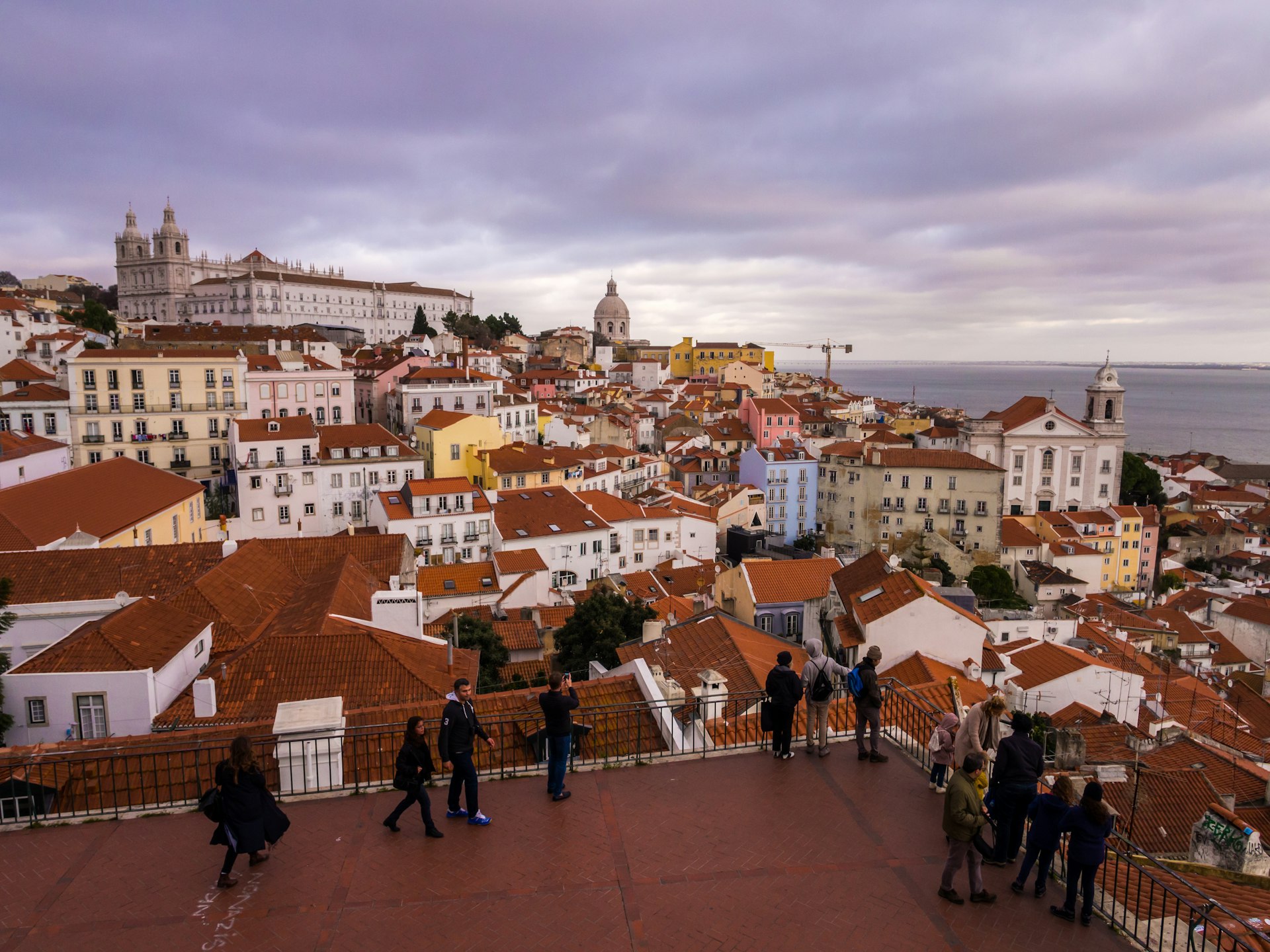Best time to visit Lisbon
3 min read
With famously gorgeous weather and almost 300 days of sunshine a year, the best time to visit Lisbon is…whenever your heart desires.
The crowds come in summer, lured by scorching sunshine and big events, fall and spring have a gentler magic, and even the winter has its own quiet charm. Spring and summer are Lisbon’s warmest seasons: prices rise in line with the daily temperatures, and the city is at its liveliest, with lots of outdoor events and music festivals.
The pace of life slows down in fall and winter, with children returning to school and Lisboetas heading back to work. The colder and shorter days attract fewer tourists, and accommodation prices drop, too – making this a great time for budget-conscious travelers who want to experience a quieter side to the Portuguese capital.
Here’s all you need to know about when to visit Lisbon.
Easter to May and September to October are the best times for exploring Lisbon on foot
Lisbon welcomes visitors with pleasant weather all year long, but spring is the season when it hits the sweet spot. Trees are blooming, days are getting longer and occasional rainfall keeps the parks green, making Lisbon just that bit more romantic. The weather is just warm enough – but not yet too hot – to explore the city on foot. Easter is the busiest period, with crowds of tourists visiting from neighboring Spain and elsewhere in Europe, and accommodation prices increase slightly. Of all events happening in April, no date is dearer to locals than April 25, the national holiday celebrating the end of the dictatorship in 1974.
Fall has its own magic. Even into late September, it can still be summery enough to hit some of the beaches near Lisbon, and high-profile film festivals that take place in September and October cover a wide range of genres and tastes. It’s also back-to-school season, so expect busier weekdays on public transit during the daily commute.
As October rolls on, the crisp, sunny mornings are a sign that winter is around the corner. Fall sets in, and smoke and the scent of roasting chestnuts fill the city as street vendors switch over from selling ice cream. Tourist crowds slow to a trickle as the end of daylight saving time approaches and days get shorter. But prices fall, and a welcome calm settles over tourist sites.

June to September is the best time for festivals and outdoor events
The packed calendar of events every summer in Lisbon can be a double-edged sword. On the one hand, there’s lots to do, and it’s fascinating to mingle with locals at music festivals and the arraiais (improvised outdoor parties at tavern-style restaurants with live music) that fill the streets in June in honor of St Anthony. On the other hand, the crowds bring high prices and lots of competition for hotel beds and tables in restaurants.
With schools closed, many locals leave the city to vacation on the beaches of the Algarve, and it’s not uncommon for more traditional restaurants, cafes and shops to shut their doors for at least half of August. Lisbon landmarks and museums, however, remain open for business as usual and often have extended opening hours. High daytime temperatures in July and August can make walking up Lisbon’s hills a tiring ordeal.

December to Easter is the best time for budget travel
Lisboetas get busy making plans for a busy holiday season during the winter months. For travelers, it’s the low season and a time of year when not much is happening – which can feel like bliss after the summertime crowds. Expect many holiday-themed events, street markets and festive menus at restaurants. On the weekend before Shrove Tuesday, some Carnaval parades take over the streets, but the biggest Mardi Gras celebrations happen outside of Lisbon in nearby towns like Sesimbra and Torres Vedras. Accommodation prices are at their lowest too, and crowds thin out dramatically – even at the top sights.





